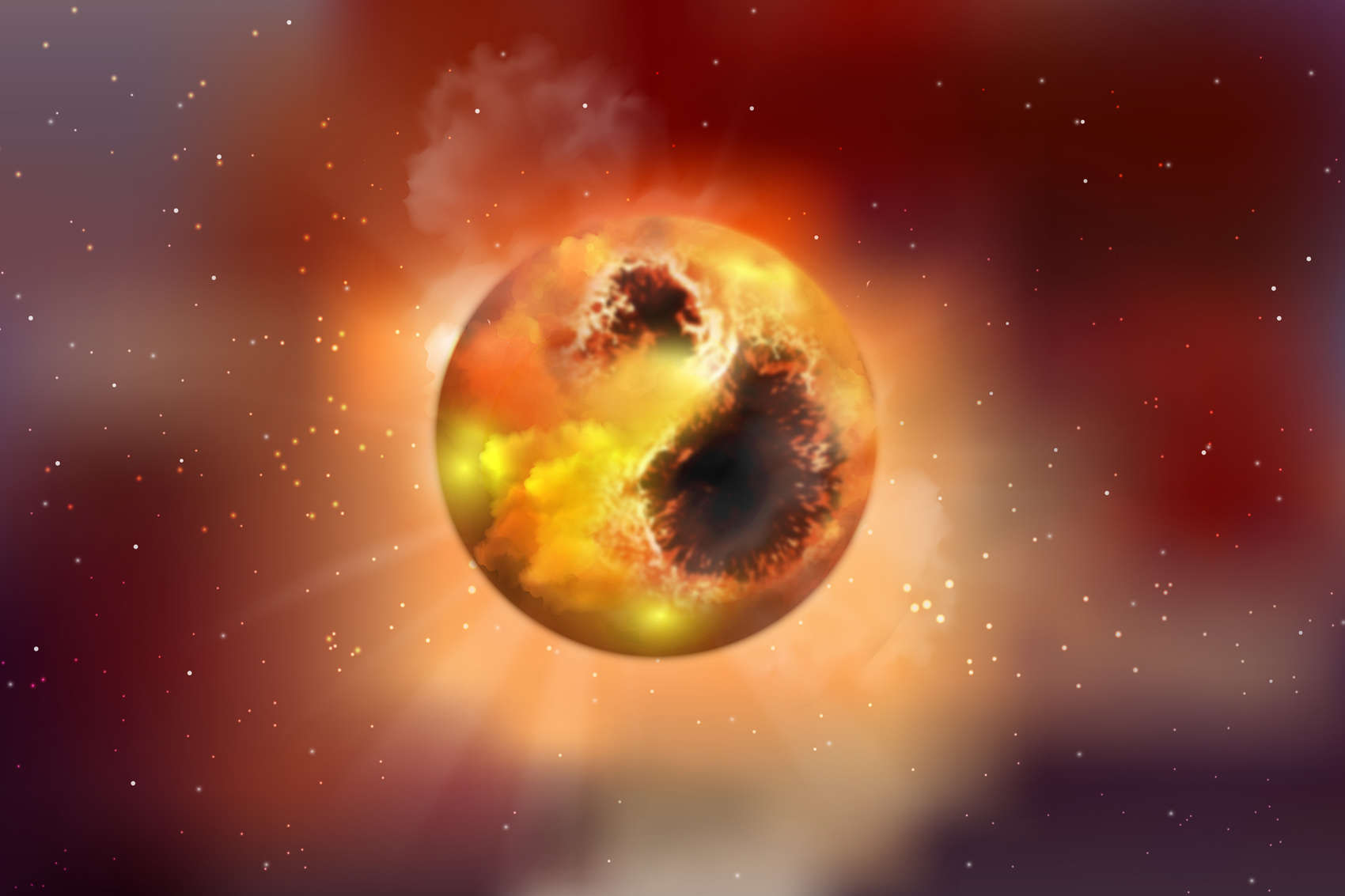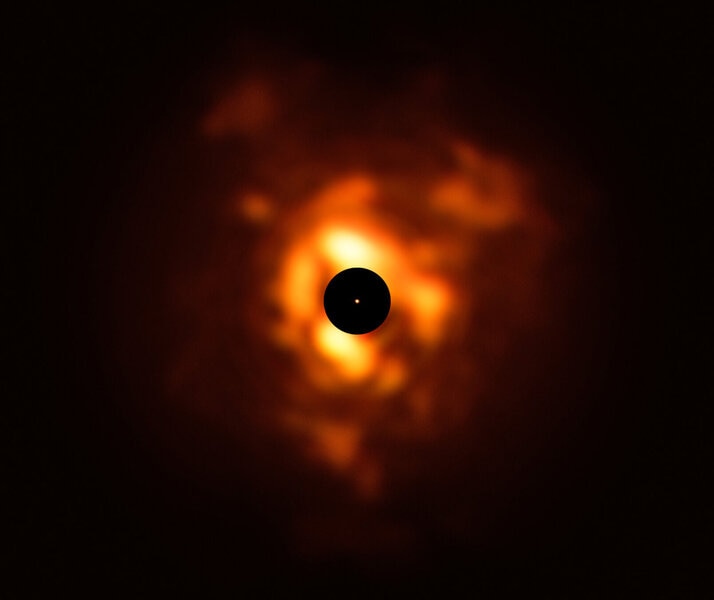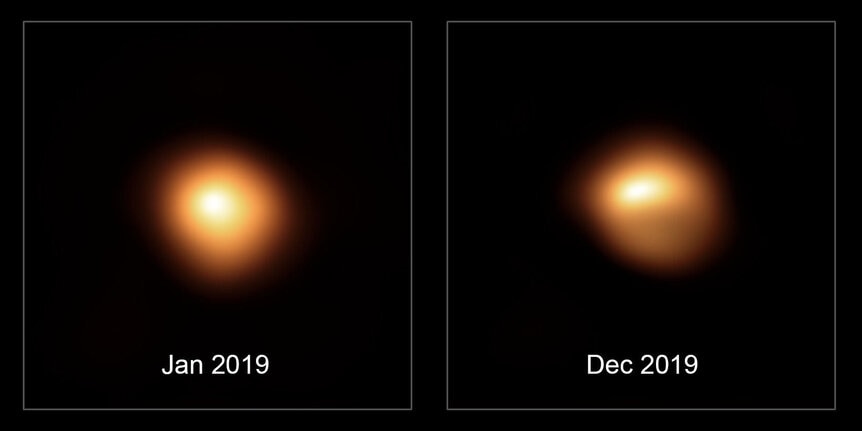Did Betelgeuse fade due to supersized sunspots?

Why did Betelgeuse dim so drastically?
In October 2019 it started getting fainter. It’s a variable star, getting brighter and fainter on a roughly 420-day cycle, so that’s not unusual. But this time it started getting fainter… and then didn’t stop. Normally varying by about 50% in brightness, it dropped by a factor of three by early February 2020, and by eye was noticeably dimmer than other stars in Orion. It wasn’t until mid-February that it bottomed out and started rebrightening.
Of course this engendered a lot of speculation in the public that it might explode, though I don’t think any professional astronomers took that seriously; stars like Betelgeuse explode because of what happens in their core, and the upper atmosphere is a long, long way up from there. Changes in the core take a long time to make their way to the surface.
So what was going on? One idea, supported by observations, was that Betelgeuse expelled a vast cloud of dust, tiny grains of silicates and carbon, which are opaque in visible light and so dimmed the star from our viewpoint (full disclosure: This was published by my colleague and friend Emily Levesque and a coauthor).
Another possibility, though, is that Betelgeuse had an unusually large bout of starspots — darker, cooler regions on the visible surface caused by magnetic activity inside the star. The Sun gets these, and we call them sunspots: Basically the tangled magnetic fields inside rising volumes of hot plasma prevent them from sinking back inside the Sun as they cool, so they hang out at the surface. Since they’re cooler they’re darker, and the Sun gets a bit dimmer in visible light.
Red supergiants like Betelgeuse can get enormous starspots, far bigger than the Sun itself, and in fact can cover vast stretches of their surface. Could a particularly big outbreak of stellar acne be the cause of the star’s dimming?
A team of astronomers looked into it. They observed Betelgeuse in sub-millimeter light, a wavelength far outside human sight and edging into radio wavelengths. The advantage of these wavelengths is that it's likely that any dust Betelgeuse would have belched into space is transparent in that part of the spectrum, so wouldn’t affect the observations. If dust were the culprit, they wouldn’t expect to see any changes in the light from the star.
However, they did: At sub-mm wavelengths, Betelgeuse dimmed by about 20% at the same time it dimmed in visible light! That seems to show that dust is therefore not why the star dimmed.
Sub-mm light comes from the star itself, so if the light dimmed, that means the star’s surface intrinsically did. They posit that gigantic starspots formed, dimming its light.
You’d expect therefore that the star cooled as well, since spots are cooler. The work done earlier by Levesque looked into that by observing temperature-sensitive molecules of titanium dioxide in the upper atmosphere of Betelgeuse. They found the temperature dropped by at most 50 – 100° Celsius. A cooler star emits less light, but a drop of this range wasn’t enough to account for the dimming by itself.
However, the new study shows that this still works for spots. A series of starspots 200°C cooler covering half the surface would account for both the temperature change and the dimming in both visible light and sub-mm.
This also dovetails with extremely high-resolution images of Betelgeuse taken in December 2019, which showed that the southern half of the surface was dimmer than the other half. It’s possible that the ejection of a dust cloud blocked just the southern part of the star, but it’s also possible that it was covered in enormous starspots, too. Models of red supergiants show that spots can get that big.
Mind you, “big” falls pretty short of their size as an adjective. Betelgeuse is roughly 900 times the diameter of the Sun — so well over a billion kilometers across — making these starspots far larger than our entire star. Just the spots themselves would stretch from the Sun out past Jupiter! They’re absurdly enormous.
So is this the last word on Betelgeuse’s bizarre behavior? Almost certainly not.
For one thing, Betelgeuse started brightening again pretty much right on time, and reached its normal brightness by June 2020. That implies the spots grew and dissipated pretty rapidly, in just a few months. Simulations of red supergiant stars show their upper layers can brighten and dim over timescales of a few months, so it’s possible the purported spots could strengthen and wane over the same time as the brightening and dimming seen. But it’s weird they would’ve dissipated right on schedule with the normal cycle of the star’s brightness. That bugs me.
Also, we don’t really know what can cause changes in sub-mm light from a red supergiant. The upper atmospheres of these beasts are complex, with pulsations moving through them, convection moving things around, and other issues.
So it’s possible that spots are behind all this, but it’s not a lock, and I don't think dust can be ruled out.
Clearly there’s a lot more we need to figure out about this bloated ruddy supernova-in-the-making. It’s too close to the Sun right now to observe, but I bet in late summer when it’s up higher in the morning, astronomers will once again start observing it.
What will this ridiculously huge star do next? We’ll find out soon enough.
My thanks to Emily Levesque for answering some questions I had about Betelgeuse's upper atmosphere. Any lingering errors are mine; this field of study is... complex. To say the least.
































